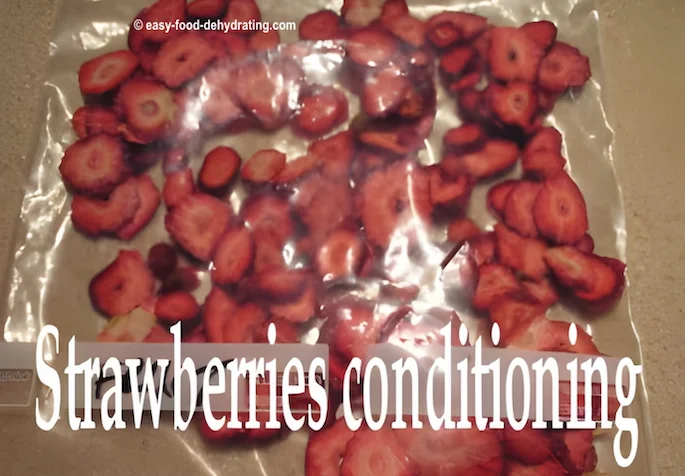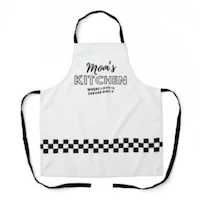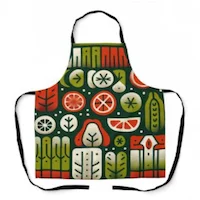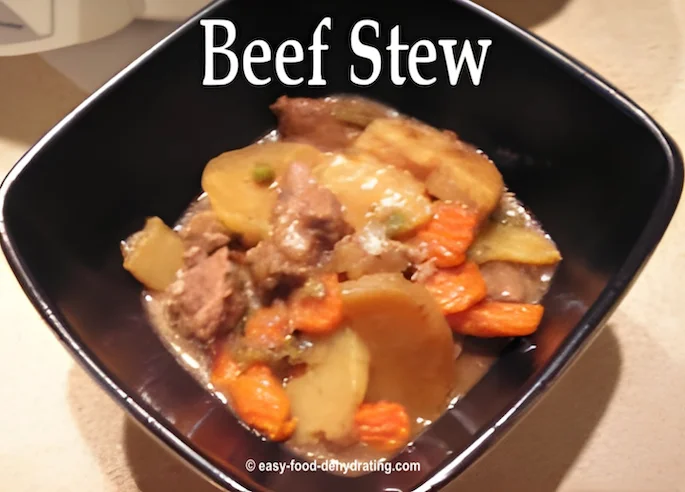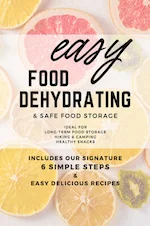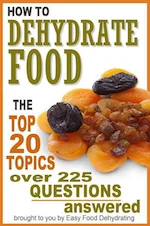whatever the reason or season!
- Home
- How to Store Dehydrated Food Safey for Long Term Storage
- Conditioning Fruits and Vegetables After Dehydrating
Conditioning Fruits and Vegetables After Dehydrating
Conditioning Fruits
and Vegetables
After Dehydrating
Conditioning fruits and vegetables after dehydrating is an often overlooked step in the preservation process. Letting our dehydrated foods cool down to room temperature before vacuum-sealing and storing it is what conditioning is all about.
Once the dried fruits and vegetables have reached room temperature, place it in freezer-type Ziploc bags, zip 'em up, and leave them on your kitchen countertop for a couple of hours, or overnight.
This helps to disperse any residual moisture evenly among the items in the bag, and that all pieces are at the same level of dryness.
Later, if you feel that the foods are a bit damp, pop it back on the dehydrator and let them condition again briefly. Look, it's better to be safe than sorry, right?
Mother's Day Specials!
Use Ziploc-Type Freezer Bags for Conditioning Fruits and Vegetables After Dehydrating
Use the Ziploc freezer-type bags. Sandwich-style bags are not strong enough and can easily get punctured by sharp dried foods!
Feel free to reuse the freezer bags because they're not cheap—I do throw them away when I see any sticky residue left behind. NOTE: I will NEVER reuse a plastic bag that has had MEAT in it.
I use
some bags specifically for fruit and I use my black felt-tipped pen to
mark the bags as 'fruit only', and have some bags just for vegetables. It's a plan and it works for me.
Controversial Statement: You Can Skip Conditioning, but...
To be totally honest, conditioning fruits and vegetables after dehydrating is my fourth step and is a step that many seasoned dehydrating folk just don't do. But I won't tell if you won't.
If you feel like your dehydrated food is totally dry enough after the first go-around on the dehydrator, skip this step.
For instance, you may like your dehydrated banana chips to be a little on the chewy side.
But dehydrated mushrooms are a different story. Please read on.
Be Extra Careful With Mushrooms...
Mushrooms
are well known for needing a second go-around on the dehydrator! You might think they are dry, but they can easily fool you. This veggie needs to be very dry prior to vacuum-sealing. This is the one veggie I would NOT skip doing the conditioning step.
When dehydrating mushrooms, take note of their special dehydrating temperatures. Don't be afraid to give them more time.
NOTE: Some foods will remain sticky, such as dehydrated plums (prunes) and that's OK. But not for mushrooms!
Still a Bit Too Sticky?
If your fruits or veggies are still sticking together a bit too
much in the Ziploc bag, put it back on the
dehydrator for an hour or so as mentioned earler.
Let the food cool off again.
Then put the dried food back in the bag(s) again for a couple of hours. The food should now be ready for vacuum sealing!
Benefits of Conditioning Food After Dehydrating It - Prior to Packaging It
Here are some key points:
- Conditioning involves letting dehydrated food sit sealed at room temperature after initial drying.
- This allows moisture to evenly redistribute in the food, which improves texture.
- Conditioning is especially recommended for fruits, vegetables, and meat jerky.
- Not conditioning can result in food that is still leathery, tough, or prone to mold if any moisture remains.
- Proper initial drying is still critical to prevent spoilage during conditioning.
- Some dehydrator manuals advise conditioning while others don't mention it.
So while not mandatory, conditioning can optimize the final quality and storage life for many dehydrated foods. But the extra time and countertop storage space required means it is skipped by some.
Why Is Conditioning Beneficial for Tough-Textured Items?
Here are a few reasons why conditioning can be beneficial for tougher, denser dehydrated foods:
- Allows moisture to evenly distribute - Denser foods can hold pockets of moisture internally after dehydrating. Conditioning gives time for any remaining moisture to make its way to the surface and evaporate.
- Enables chemical changes to finish - Drying initiates starch to sugar conversions and other chemical changes. Conditioning allows these processes to be fully completed.
- Restores flexibility - Dense items can be rigid until interior moisture equalizes. Conditioning makes the texture more flexible and chewy - rather than tough.
- Improves rehydration - Foods like meat jerky rehydrate better if moisture has redistributed during conditioning.
- Reduces risk of mold - Trapped internal moisture raises chances of spoilage.
- Develops full flavor - Oils redistribute throughout the food more evenly during the resting period.
So for dense foods like meats, fruits, and some vegetables, the extra conditioning step helps achieve the ideal texture and flavor. Conditioning these foods makes them less chewy and easier to rehydrate.
Thanks go to Claude 2.0 for helping me with the above elaboration on the benefits of conditioning food prior to vacuum-sealing and packing it away. :-)
Before you go, don't forget to pick up your free eBook called "How to Grow and Dehydrate Herbs" here!
